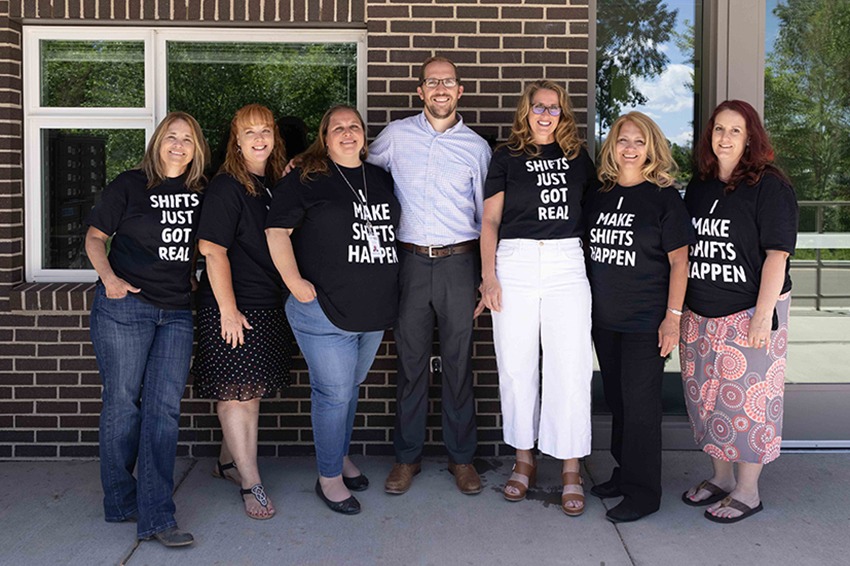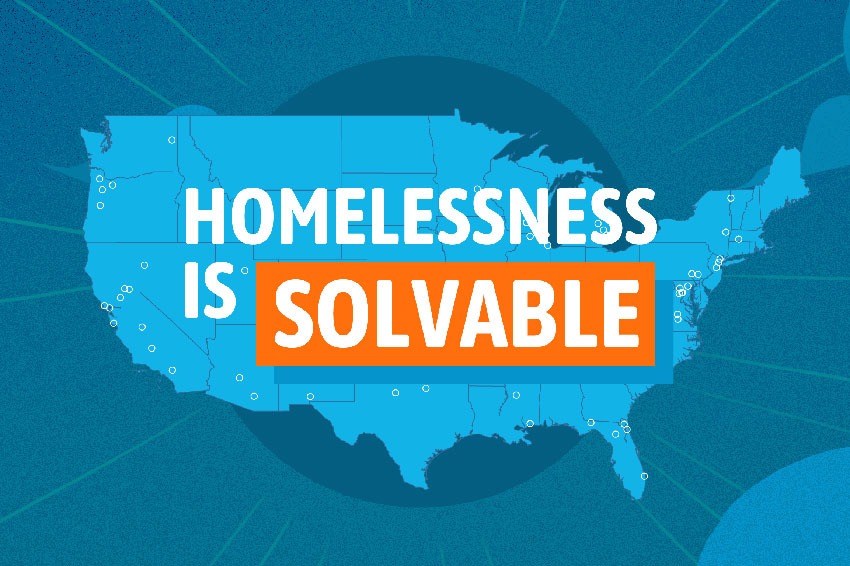Creating a tipping point
for ending homelessness
in the United States
The future we can build, together
By 2026, Community Solutions envisions a future where cities and counties of all kinds have made homelessness rare and brief. Ending homelessness is no longer seen as exceptional. It’s expected.
In the last year, Built for Zero communities have continued to prove that having a single aim, a unified team, and high-quality data can create conditions where homelessness is solvable.
This future is not an impossible dream. It is exactly what the MacArthur Foundation had in mind in 2021, when it awarded Community Solutions $100 million over five years to support Built for Zero, a movement of communities working to measurably end homelessness. The goal: accelerate an end to homelessness for at least 75 populations in 50 U.S. communities by 2026.
This Annual Report reflects the core insights and opportunities that have emerged in the first year of MacArthur Foundation’s five-year challenge.

Table of Contents

Helping communities end homelessness
Built for Zero is a movement of 98 U.S. communities committed to ending homelessness. To create a tipping point, we need proof that homelessness is solvable in every kind of context. Our aim is to help at least 50 U.S. communities reach functional zero”homelessness for 75 populations by 2026. In the last year, Built for Zero communities were able to end veteran or chronic homelessness in communities in California, Colorado, and Virginia. Many more communities also incorporated quality, by-name data to improve their system responses towards homelessness.

SOLVING KEY DATA CHALLENGES
Data, governance, and accountability challenges have created long-standing barriers to effective homelessness response systems. Community Solutions worked with partners to examine how data and technology tools in the field can be turned into effective catalysts for ending homelessness. Federal government and software vendors have the ability to play a key role in improving data standards, driving interoperability between systems, and increasing analytics skills amongst homelessness service providers. And, since the experience of homelessness is deeply intertwined with healthcare systems, as well as criminal justice institutions, sharing data points across these fields is a vital step to establishing upstream change for homelessness reduction.

SUPPORTING RACIALLY EQUITABLE HOMELESS RESPONSE SYSTEMS
Systems that are responsible for ending homelessness are often not designed to identify or respond to racial disparities. To address issues of equity in the system, we worked with racial equity leaders, homeless services staff, and people with lived experience of homelessness to create a framework for measuring and improving key indicators of a racially equitable homeless response system and are developing interventions for tackling each indicator.

CREATING ACCOUNTABILITY FOR ENDING HOMELESSNESS
Community Solutions aims to marshal accountability amongst elected leadership, as well as galvanize the opinion of public constituents in the effort to end homelessness. To engage elected officials and Communities are proving that homelessness can be ended, not only for individuals, but for entire populations. But history tells us that evidence alone is not enough. Scaling a breakthrough innovation requires shifts in attitudes that create new expectations of leaders. This year, Community Solutions aims to marshal accountability amongst elected leadership, as well as galvanize the opinion of public constituents in the effort to end homelessness. This year, Community Solutions partnered with Boston University’s Initiative on Cities for the 2021 Menino Survey of Mayors to understand mayoral perspectives on ending homelessness. We also launched #HomelessnessIsSolvable, a campaign to amplify the stories of communities proving that homelessness is solvable.

CLOSING THE HOUSING SUPPLY GAP
Traditional ways of creating affordable housing are typically too slow or rigid to adapt to dynamic needs for ending homelessness. Community Solutions has continued to test and scale new models for financing and providing housing to help communities drive toward functional zero. By utilizing social impact capital, we are securing properties and connecting them to the homelessness system in cities such as Denver and Santa Fe. In 2021 we began working to scale this model to other Built for Zero communities.

WORKING UPSTREAM IN HARTFORD, CONNECTICUT
In order to solve homelessness, we need to transform the conditions that make residents vulnerable to housing crises in the first place. This can include supporting community-driven development and establishing cross-sector accountability to stop homelessness before it happens. In Northeast Hartford, Connecticut, these strategies are working together to stop inflow into homelessness. Hartford residents organized together with the support of Community Solutions to revitalize the abandoned Swift Factory, an important industrial center of its time. The building is now a neighborhood hub for jobs, health, and learning, and soon will be home to a new branch expansion of the Hartford Public Library.

TRANSFORMING EARLY CHILDHOOD SYSTEMS IN BROWNSVILLE, BROOKLYN
In collaboration with caregivers and parents in Brownsville, United for Brownsville is working to close equity gaps in early intervention programs for children from birth through 36 months of age. The initiative is meant to increase access to services, including speech therapy, physical therapy, and occupational therapy, for Black and brown children. United for Brownsville is developing solutions driven by data and focused on community input.

Thank you to our partners
2021 Financials
Pre-audited financials



